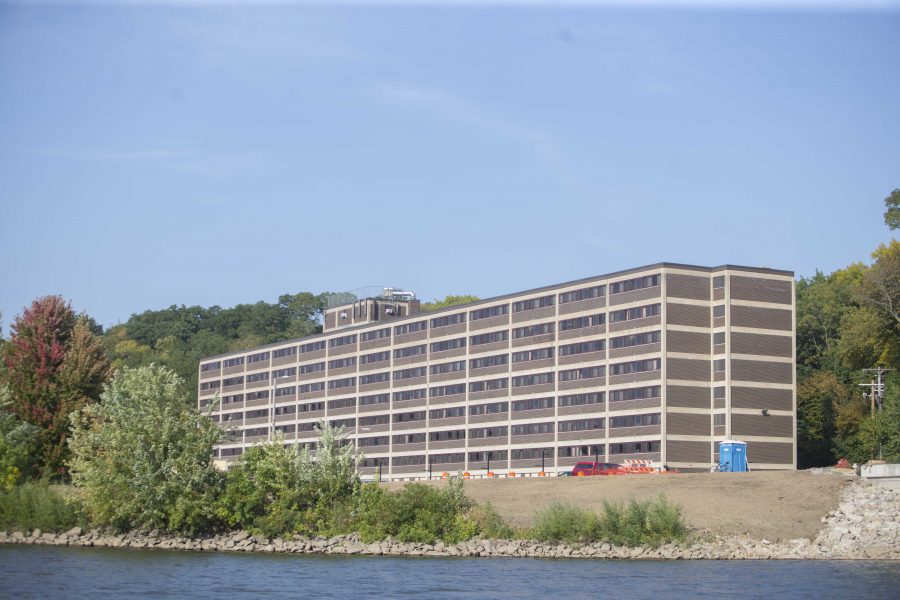Jaimes: Students react to new changes in Mayflower Hall
Students at Mayflower Hall seem surprisingly happy with it operating at 60% capacity.
Mayflower Residence Hall is seen Friday, Sept. 15, 2017.
October 4, 2018
A recent article in the DI, “Mayflower operates at 60 percent capacity to give returners on-campus living space,” grabbed my attention as soon as the headline appeared on my laptop.
As a freshman, I knew I would adapt better to college if my living space was similar to that of my own home and willingly chose Mayflower as my first home away from home. I chose to live there again my sophomore year, when my roommate decided it would be the easiest route.
When I saw that the UI Housing & Dining, whose residents were once packed to the point where students were living in lounges, now has a residence hall operating at just 60 percent capacity, I wondered what was behind the mysterious optimism that the department has been preaching.
The article stated that the UI will adjust the capacity of Mayflower as enrollment fluctuates. At the moment, officials expect a decrease in enrollment by the year 2023, which means that Mayflower will have to expand the number of residents it attracts if it wishes to have any residents at all.
Housing & Dining also stated that a single room in Mayflower would cost the same amount as a single room in Currier, which I envied as a student who paid more to live in Mayflower instead of Currier just one year ago.
In my overall shock, I went to Mayflower to get opinions from residents who get to experience the hall in a more private setting than I did.
RELATED: Mayflower operates at 60% capacity to give returners on-campus living space
First-year UI student Dylan Aver had no thoughts on the price difference between a single room in Mayflower and one in Currier, but he did say he would consider living in the hall again. When asked what he thought the UI could do to attract students to Mayflower, he advised the university to increase the number of campus tours in the hall in order to promote it to prospective students and their families.
Second-year student Allie Rowell said she chose to live in the hall again because she liked the idea of having a single room on campus while having her best friend living as her suite mate. She does not believe that she will live in Mayflower a third year, and she looks forward to living in an environment catered to a more mature student populations than the residence halls.
As for the new adjusted price that makes Mayflower comparable with a single room in Currier, Rowell thinks it offsets the negatives of Mayflower, such as the distance and traffic. Similar to the original article in the DI, she agreed that obtaining a parking spot was easy compared with the time she wasted keeping her car in the Hawk Lot last school year. She thinks that the hall can improve by increasing the frequency of buses but understands the issues concerning traffic.
Overall, I was surprised to see that students were pleased with the decision to give residents more freedom and more space, even if the hall is not completely filled. Whether that is the right fiscal decision, Rowell and Aver have persuaded me that students are happy and willing to return to the hall, and it could serve as a more popular home for returning students.






